Done and Dusted
Host: Katherine Research Station
Written by Jodie Ward – Rangeland Research Officer, Katherine Research Station.
Good news! We didn’t burn out the neighbours, we only set the right plots alight and everybody had a good time! (Oh and we finished pasture sampling before we burnt!)
With one dozer, one grader, two fire fighting units, six staff, one Bushfires NT crew member and firebreaks over 30m wide all the way around both of the Shruburn sites, I am pleased to say we had a successful day. Burning at this time of year is always a bit risky as the grass is so dry (last significant rainfall was in early April) and the wind can be unpredictably gusty causing fires to jump containment lines and become uncontrollable. But with the 7P’s (prior preparation prevents **** poor performance) in place, we were able to avoid all major catastrophes!
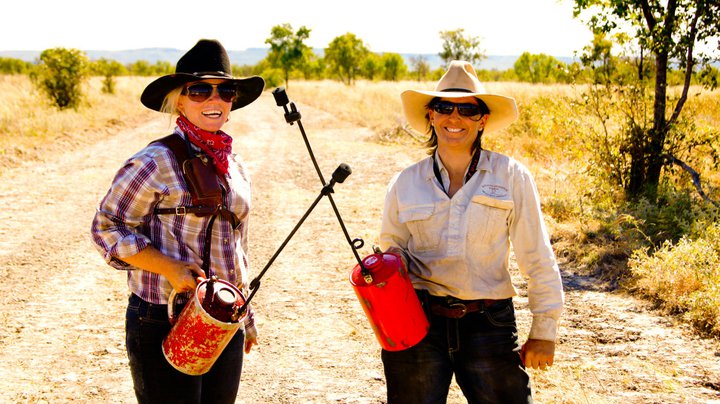 Tasha and Dionne with the firebugs ready to light it all up! (Photo: Caz Pettit)
Tasha and Dionne with the firebugs ready to light it all up! (Photo: Caz Pettit)
Before the real burning is started, a back burn is made on the edges of the plot in the direction the wind is travelling. This fire slowly creeps inward against the wind removing the fuel (grasses and small plants) which provides and additional barrier to the cleared firebreaks made earlier by the grader. Two people with firebugs walk around the edges of the plot and meet up at the opposite corner. The fire then creates its own energy, racing into the middle where it ultimately burns itself out, with luck, burning everything with it.
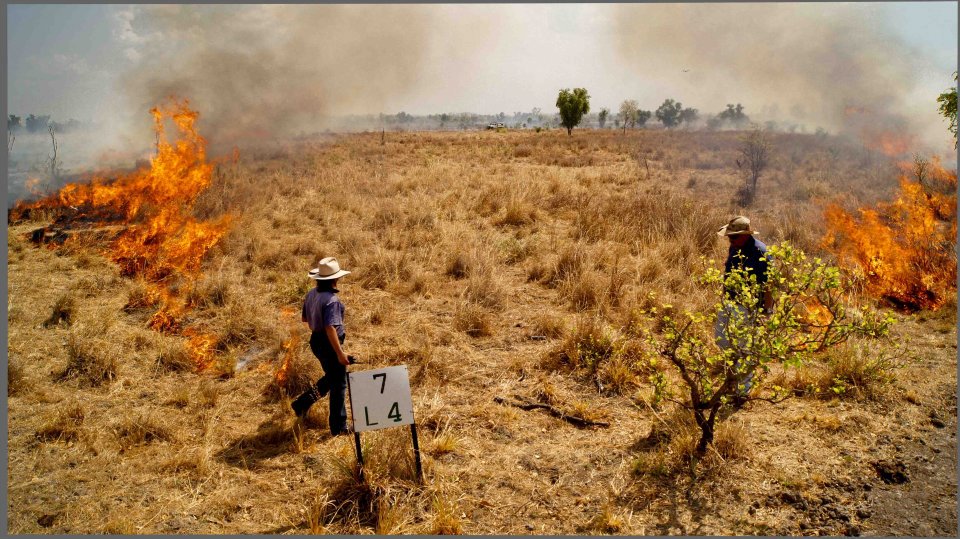
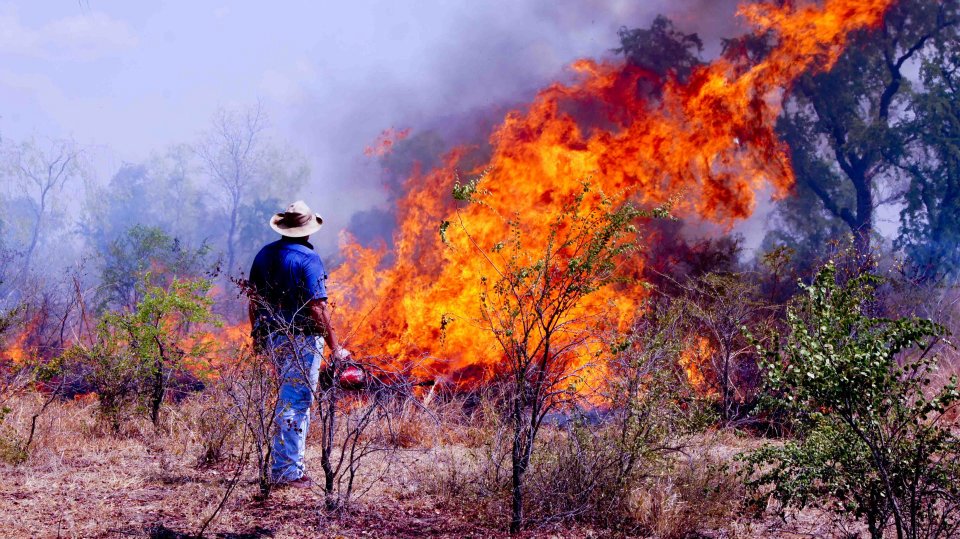
While the two people with firebugs are setting fire to the designated plots, the rest of us are driving around with the fire fighting units and earth moving equipment with our eyes peeled for any embers that may have jumped the fire breaks and threaten other areas (particularly area outside the plots and those control plots which are never to be burnt!).
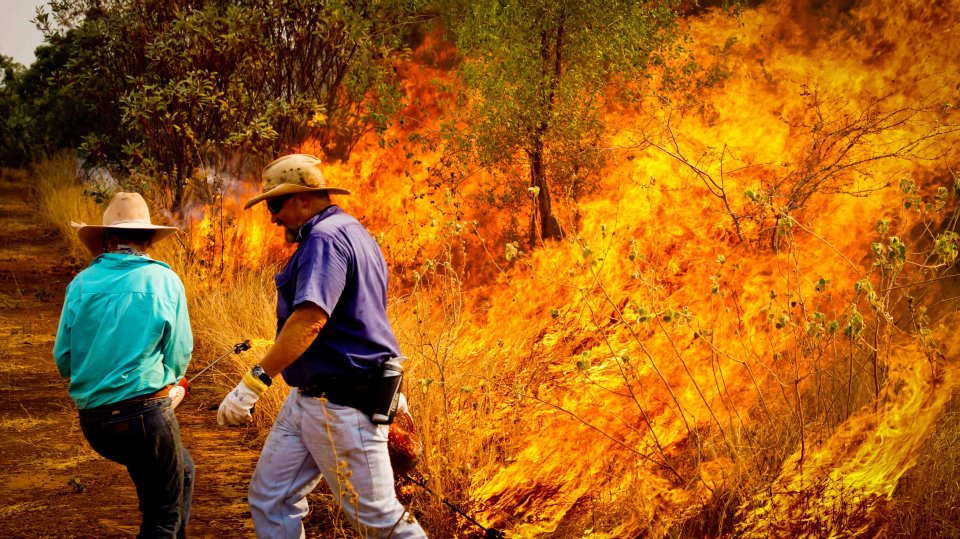
This burning trial, affectionately known as Shruburn, is now in its 20th year and from it, we have learnt quite a few things. For example, it is all well and good to burn early in the year to reduce tree canopy cover on black soils, however when the grass grows back, cattle in the paddock will selectively graze this fresh new growth leaving the soil exposed and prone to wind erosion and weed encroachment until the next rains, which might be six or more months away. Land in this condition can rapidly decline in health and productivity, so if burning early on the black soils, the Shruburn trial has demonstrated that it is best to reduce the number of cattle in the area so the burnt country doesn’t get overgrazed or alternatively burn a quarter of a paddock at a time and rotate the quadrant burning every year.
We’ve also learnt that fire doesn’t necessarily increase the spread of black spear grass (Heteropogon contortus) as is often observed elsewhere. On the red soil plots, we have found that black spear grass has increased irrespective of whether the plots have been burnt or not. In fact, on the plots that were burnt more frequently, the spread of this species was actually less than on the others.
Frequent burning (every two years) on either red or black soil plots increased the proportion of annual plant species over perennial plant species. This is bad for land condition because annual species germinate and die within the same year and their root structure is simple and shallow. A single perennial plant will survive from year to year, becoming dormant in the dry season but growing prolifically in the wet season. Perennial plants are extremely valuable as they have extensive root structures that hold the soil together and they can be counted on to be there year after year, providing some assurance to cattle managers that there will be feed in the paddocks for years to come, whereas annual plant growth fluctuates from year to year depending upon seasonal conditions.
Getting a hot burn every four years seems to be the best method for managing woody species as well as balancing pasture composition and bulk. The hot burn kills the suckers (young trees), reduces the canopy of mature trees and the four yearly frequency doesn’t impede the health of the valuable perennial plants.
So with that said, there is still a lot that can be learnt from the Shruburn trial, especially with the current global focus upon carbon capture and greenhouse gas emissions, which have made this trial internationally recognised. Another reason to continue the trial long term is to check to make sure that the current recommendations stand the test time and aren’t affected by extreme climatic events.
Other trials we’ve got going on at Kidman Springs at the moment include Whitney’s Selected Brahman Project (see Monday’s Central Station blog) and the Senepol crossbreeding herd. The aim of the work is to find a way to provide more marketing options for northern producers with Brahman cows. Crossbreeding with Senepols produces an animal which is suitable for both live export and Australian domestic markets. So far, the research is showing that the Senepol crossbred performs better than the straight Brahman under extensively managed NT conditions and the steers grade better when sent to abattoirs in southern Australia. The research on this project is ongoing, with further research scheduled for the next five years, focussing on monitoring the breeding performance of the Senepol cross heifers, so be sure to keep an eye out for more results of this project coming your way shortly!
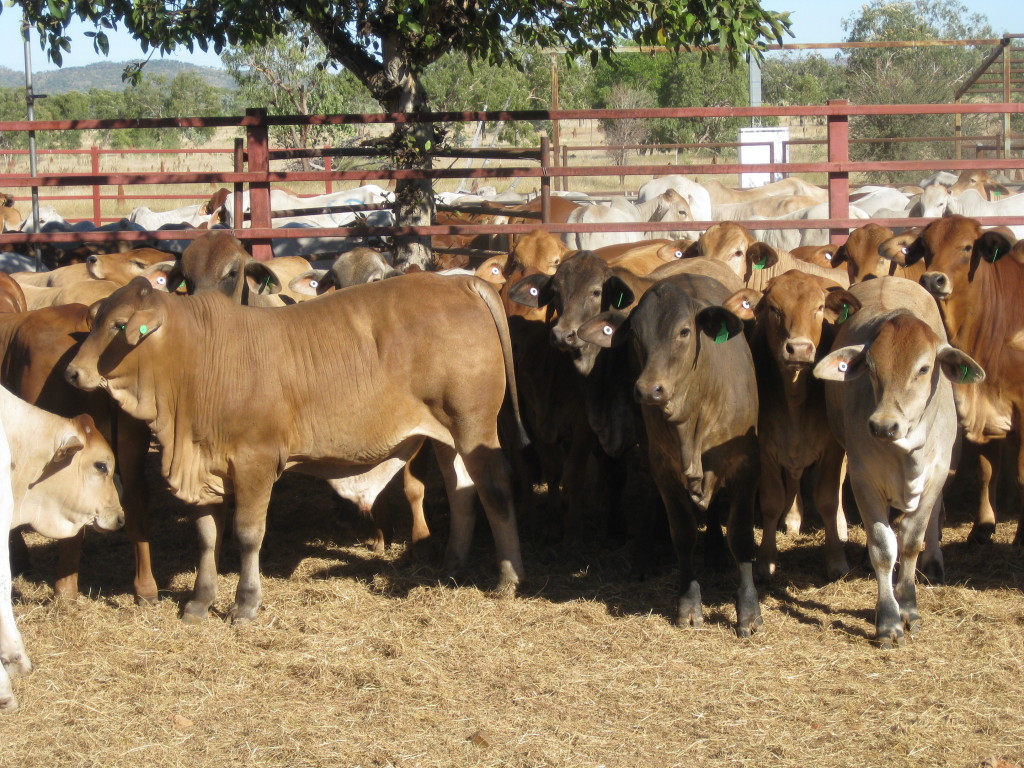
So that’s it. That is us done sharing our week with you. And what a week it’s been! From pregnancy testing and body condition scoring with Whitney, to fencing, grass counting and burning with me – it’s been a journey!
I really hope you have enjoyed reading my thoughts, as much as I’ve enjoyed sharing them. I am really passionate about Australia’s beef industry, and I honestly enjoy my job. It’s not just about getting paid and ticking things off a list, it’s a way of life. There’s just a sincere honesty in the satisfying and fulfilling feeling you get when you come home after a hard day working in the sun, on the land, knowing you’re contributing in some minuscule way to the progress of the industry that feeds millions across the globe. I love it and I would like to thank you for allowing me to share my passion with you.
Jodie

